https://ift.tt/2hRv5sH
The high seas. Piracy. Savage hunts. And… birds. When we think of predatory birds, we think of hawks, eagles, falcons, and owls. Yet, the Earth’s oceans are patrolled by aggressive avian predators that evolved from normal seabirds but prey upon mammals, land birds, and other seabirds, or pirate their catches through relentless coercion. In this list, we discover the most intimidating predatory seabirds, including a petrel strong enough to down an albatross, puffin-eating gulls, and the reason why flesh-eating seabirds use greater brute force than most raptors in downing their prey.
10. Southern Giant Petrel
Ghoulish in appearance, the huge Southern Giant Petrel is an opportunistic predator that engages in grotesque hunts targeting young and sometimes adult seabirds. Breeding on islands in the Southern Ocean and certain locations on the Antarctic continent, the Southern Giant Petrel may weigh over 10 pounds, with a wingspan that can reach 6.5 feet. Dark morph birds with pale eyes make up 90 percent of the global population, while the remaining 10 percent are white morphs with brown eyes. Lacking talons, the giant petrel may bludgeon a penguin chick or other seabird to death on land and strip the flesh away with its sharp bill. Adult seabirds are also caught while flying and may be beaten against the water or drowned.
The 1978 issue of the Austral Ornithology Journal Emu described the 1977 forcible drowning and partial consumption of a Black-browed Albatross. In this observation, a Southern Giant Petrel seized the albatross on the water and forced its head underwater, even climbing on the albatross’s back before finally drowning the bird and partially consuming the kill. In a theme common to predatory birds, giant petrels are able to defend themselves should any threat arise, but in an unusual way. By disgorging a foul smelling oily mixture, giant petrels have a sure way of remaining on top as a dominant avian species.
9. Magnificent Frigatebird
The Magnificent Frigatebird is a menacing, fork tailed seabird with behavior that matches its warship name. Measuring over 3 feet long with a wingspan of up to 8 feet, Magnificent Frigatebirds enjoy great maneuverability despite their size, having the lowest wing loading of any living bird. Equipped with an elongated, hook-tipped bill, Magnificent Frigatebirds supplement their fish diet by attacking other seabirds, such as boobies and tropicbirds in mid-air, sometimes grabbing them between the mandibles of their bill until the victim regurgitates its catch.
Then, the frigatebird lets go of the targeted seabird and swoops to catch the abandoned food before it lands in the water. Frigatebirds may supplement their diet by raiding seabird colonies, seizing chicks left unattended. Breeding on islands off the mainland of the tropical Americas, the Galapagos, and the Cape Verde Islands in the Eastern Atlantic, frigatebirds engage in equally dramatic breeding behavior. Male frigatebirds inflate their red throat pouch to impress females, creating a huge red balloon covering most of their chest. The males then drum on the tight balloon with their bills. Nature being full of tradeoffs, frigatebirds are nearly helpless on land despite their mastery of the air, having minute legs and feet. Lacking waterproof plumage despite their ocean going lifestyle, frigatebirds avoid getting wet, taking their food in the air or plucking items from the surface.
8. Great Black-backed Gull
The largest gull species on the planet, the Great black-backed Gull also an exceptionally fierce and opportunistic predator of other birds. Measuring about 2.5 feet in length with a wingspan of around 5.5 feet in large individuals, the Great black-backed Gull is distinctively dark and massive in its native range of the east and west North Atlantic coasts, European seas, and the North American Great Lakes. Uniquely among gulls, the Great black-backed Gull is a raptor-like hunter that frequently hunts down the adults of a wide range of bird species.
Lacking talons or a hooked bill, the Great black-backed Gull relies on using brute force coupled with surprising agility and powerful pecking strength to wound and ultimately bring down avian prey. Birds hunted and eaten may include adult ducks, puffins, grebes, moorhens, shearwaters, ibises, and even harriers. Methods of killing ducks, according to a paper documenting predation on Lesser Scaup, a North American diving duck, include striking the birds on the head with their massive bill. Songbirds may be caught on the wing, while meals may be stolen from true raptors, including Peregrine Falcons. A range of seabird chicks, as well as mammals as large as rabbits and a range of rodents may be eaten by this large predatory gull.
7. South Polar Skua
The South Polar Skua is the frozen continent’s answer to a buzzard, patrolling the icy shelfs for young penguins. This species often strategically places its nests in geographical locations close to penguin colonies to allow hunting forays to steal young penguins from their nests. Such attempts provoke aggressive confrontations between the skuas and adult penguins that may lead to physical struggles as the skuas move in. At certain times and locations, young penguins and stolen penguin eggs may form the primary component of the Great Skua diet.
The Great Skua relies on its physical strength to intimidate seabirds into disgorging their catch and may literally shake down seabirds such as gulls and shearwaters, grabbing victims and jostling them until they give up their food. Massive and muscular in appearance, the stocky skuas have thick bills and a noticeable barrel-chested look that makes them look like a bodybuilding version of a gull. Related to gulls and shorebirds, Skuas are mottled dark brown or paler beige in color depending on color morph, with flag-like patches of white plumage along their primary feathers. Despite its name and having been seen right at the South Pole, the South Polar Skua disperses widely when not breeding, and may fly as far north as Alaska on its travels.
6. Long-tailed Jaeger
The Long-tailed Jaeger is the smallest member of the skua family with a circumpolar distribution and a migration pattern that takes it across the equator when not breeding. During the nesting, this seabird feeds almost exclusively on arctic voles and lemmings, taken from the stubby vegetation. The agility of the Long-tailed Jaeger combines with hovering ability to lend an advantage in spotting and catching prey. However, their lack of a raptor’s bill or talons requires the jaegers to use comparatively makeshift means of dispatching prey, pecking mammals repeatedly. Small birds and insects may also be hunted.
The Long-tailed Jaeger is dependent on mammal hunting to support its breeding to the point that when lemming populations crash, the bird goes out to sea and temporarily forgoes breeding. During the non-breeding season, or when mammals are not available, the long-tailed Jaeger is an accomplished flying pirate with a penchant for stealing fish from other seabirds while traveling at sea. Although the jaeger will capture fish itself, a meal is frequently obtained by harrying a tern or other target bird until it drops its food. Having a return to the ocean as a backup plan prevents long-tailed Jaegers from experiencing the mortality seen in other arctic predators in response to rodent population boom and bust dynamics.
5. Red-breasted Merganser
Having a bill filled with serrated mandibles that function as teeth, the Red-breasted Merganser is a strange duck with fine-tuned fishing skills. Widely distributed in Northern Hemisphere coastal waters, Red-breasted Mergansers are a member of the Merganser group of ducks known alternatively as “sawbills” that frequently winter on seacoasts. While the merganser is a fairly typical duck in size, the manner in which these waterfowl hunt is reminiscent of a feathered barracuda. A skilled fish eater, the Red-breasted Merganser captures its fish prey during underwater dives with the aid of its long bill studded with sharp, backwards facing “teeth.”
There are no modern birds that have true teeth in their bills, but convergent evolution has resulted in the development of serrated bill edges that form a row of countless distinct teeth along the upper and lower bills of mergansers. These de facto teeth allow the merganser can grip the fish in its bill, providing a firm grip and allowing the merganser to correctly position the prey to be swallowed. Merganser “teeth” resemble small shark teeth, and prevent fish from escaping since they point backward, but allow the fish to be easily swallowed. These predatory ducks also engage in cooperative hunting strategies, swimming underwater in a group to herd fish into the shallows for easier capture.
4. Great White Pelican
Pelicans are seen as spectacular, even comical birds and have also been seen as a symbol of self-sacrifice in popular mythology. Ancient Europeans believed that in times of food shortage, pelicans would cut their own breast with their bill and feed the blood to their nestlings. That idea persisted past the 16th century and featured in folk art. Of course, this is not true, but the reality is much harsher.
Ornithologists have discovered a macabre response by Great White Pelicans in South Africa to shortages of their normal fish diet. When fish stocks run low, hungry Great White Pelicans nesting near the island of Malgas have handled the lack of food by traveling to the island and preying on gannet chicks in the island’s Cape Gannet colonies. Great White Pelicans have wingspan extending over 11 feet. Only the great albatrosses have a longer wingspan among birds. Walking among the nests and swallowing gannet chicks whole, each of which can weigh over 4 pounds, the pelicans gain an easy alternative food source at great cost to the nesting gannets. In a twist that further compounds the problem, gannet nests are more likely to be left unattended and vulnerable to a pelican attack since food shortages cause both parents to leave the nest to fish simultaneously.
3. Great Blue Heron
The largest heron in North America, the Great Blue Heron may reach 4.5 feet in height and have a wingspan of 6.5 feet. While many Great Blue Heron populations occur inland, the coastal populations of widely North America’s Great Blue Heron exhibits an incredible degree of adaptation to marine environments, even standing on mats of floating kelp seaweed in coastal waters. Lacking talons, Great Blue Herons rely on their silent, stealthy walk and lightning fast strikes, using their heavy, sharp bill to stab prey or seize them between the upper and lower mandibles like a pair of forceps before swallowing. An expanding throat allows surprisingly large or awkward prey to be tackled.
As a master predator, Great Blue Herons go far beyond eating fish. Observation records have shown predation on mammals such as gophers, smaller waterbirds of many species and marsh birds such as rails. Reptiles also feature on the menu, including turtles and snakes. Unfortunately, habitat loss, pollution, disturbance, and increased predation have contributed towards declines in Great Blue Heron populations. The ocean-going Pacific Great Blue Heron subspecies fannini has been classed as endangered in Canada, highlighting the vulnerability of these large birds.
2. Heermann’s Gull
In nature there seems to be an adaptation to fill almost every niche and role, no matter how strange or specialized. One of the most remarkable adaptations in the bird world is the evolution of a gull capable of ripping off free meals from diligent and imposing pelicans. Breeding on islands in the Gulf of California, Mexico, the medium-sized Heermann’s Gull is an extraordinarily brazen pirate, stealing food directly from the pouches of enormous brown pelicans fishing in coastal waters.
Brown pelicans are remarkable in their own right, plunging into the ocean despite their ungainly build and then surfacing, juggling fish before swallowing. At these vulnerable moments, the medium-sized but highly aggressive Heermann’s Gulls close in to seize the fish before the pelican can swallow its catch. In a curious twist, adult Heermann’s Gulls steal most frequently from adult pelicans, while juvenile gulls usually take fish from juvenile pelicans. Remarkably, over 90 percent of the Heermann’s Gull population breeds on one little island named Isla Raza in the Gulf of California. The unusually patterned, colorful gulls have a white head, dark body plumage, and prominent red bills. To further distinguish the life history of this pirate, Heermann’s Gulls practice a curious reverse migration, traveling northwards all the way from southern California to Vancouver Island, Canada.
1. Caspian Tern
Terns may symbolize grace on the wing but the world’s largest tern, the Caspian Tern, is a seasoned predator that evolved to be tough. Successful in its physical adaptations, the streamlined, fast-flying Caspian Tern has a nearly global distribution. The birds are found along seacoasts but also live inland, fishing, hunting and nesting along lakes and rivers. Measuring up to 2 feet in length with a wingspan that may reach nearly 5 feet, the Caspian Tern sports a distinctively large, blood red bill that is heavy and sharpened, aiding it in seizing fish and remarkably for a tern, allowing it to dispatch warm blooded prey.
Well-built for predatory attacks, the giant terns may use their strength and hunting ability to raid seabird colonies for nestling chicks to eat. In addition to young birds, mammals may be eaten by hungry and opportunistic individuals. In addition to swooping and plunging, Caspian Terns can soar and hover, seizing their prey with surprising maneuverability for such a large bird. With their sharp bills, Caspian Terns are also master nest defenders, succeeding in driving off predatory birds, attacking them in their air. Mammalian intruders including humans may be attacked, leading to head injuries when humans stray too close to a colony of nesting Caspian Terns.
AMAZING
TRENDS,AMAZING
via Toptenz.net http://www.toptenz.net
May 14, 2018 at 05:38AM
.png)

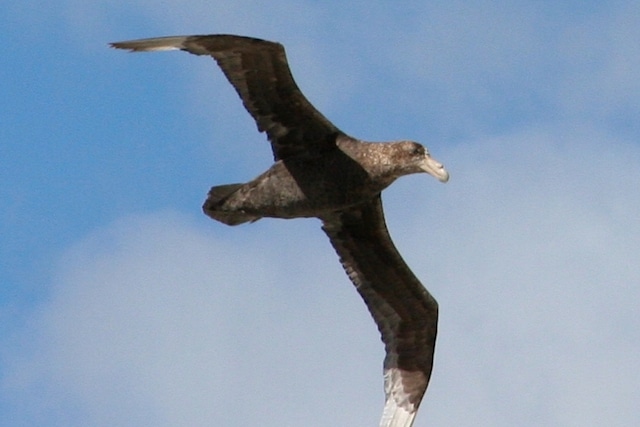

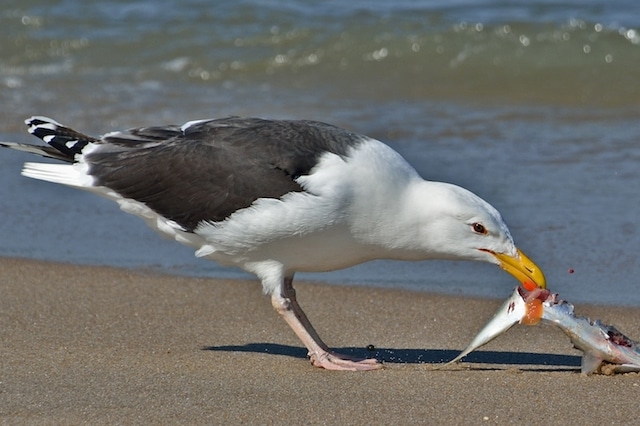
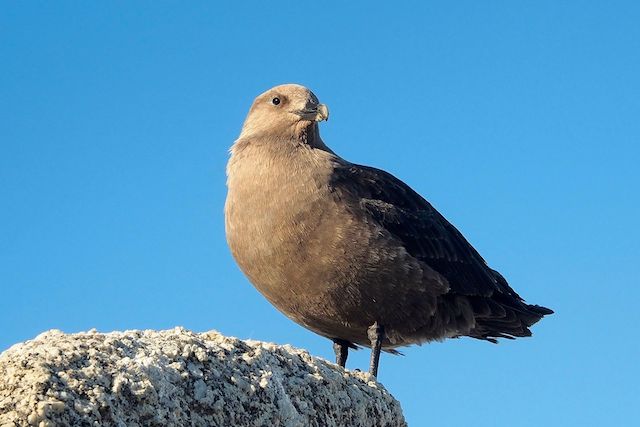

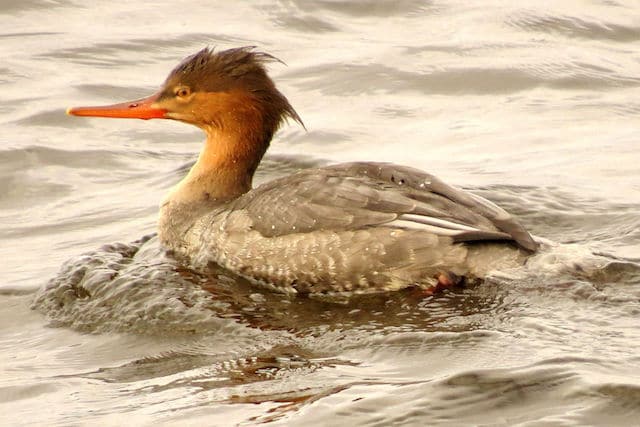

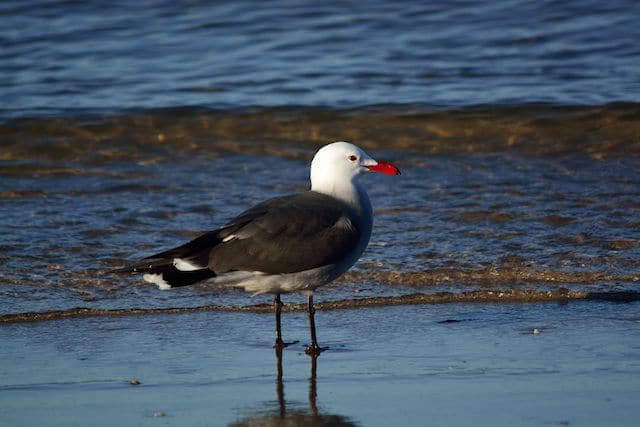
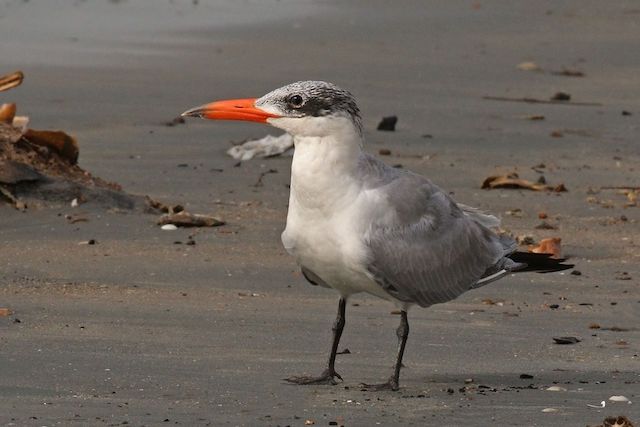
No comments:
Post a Comment